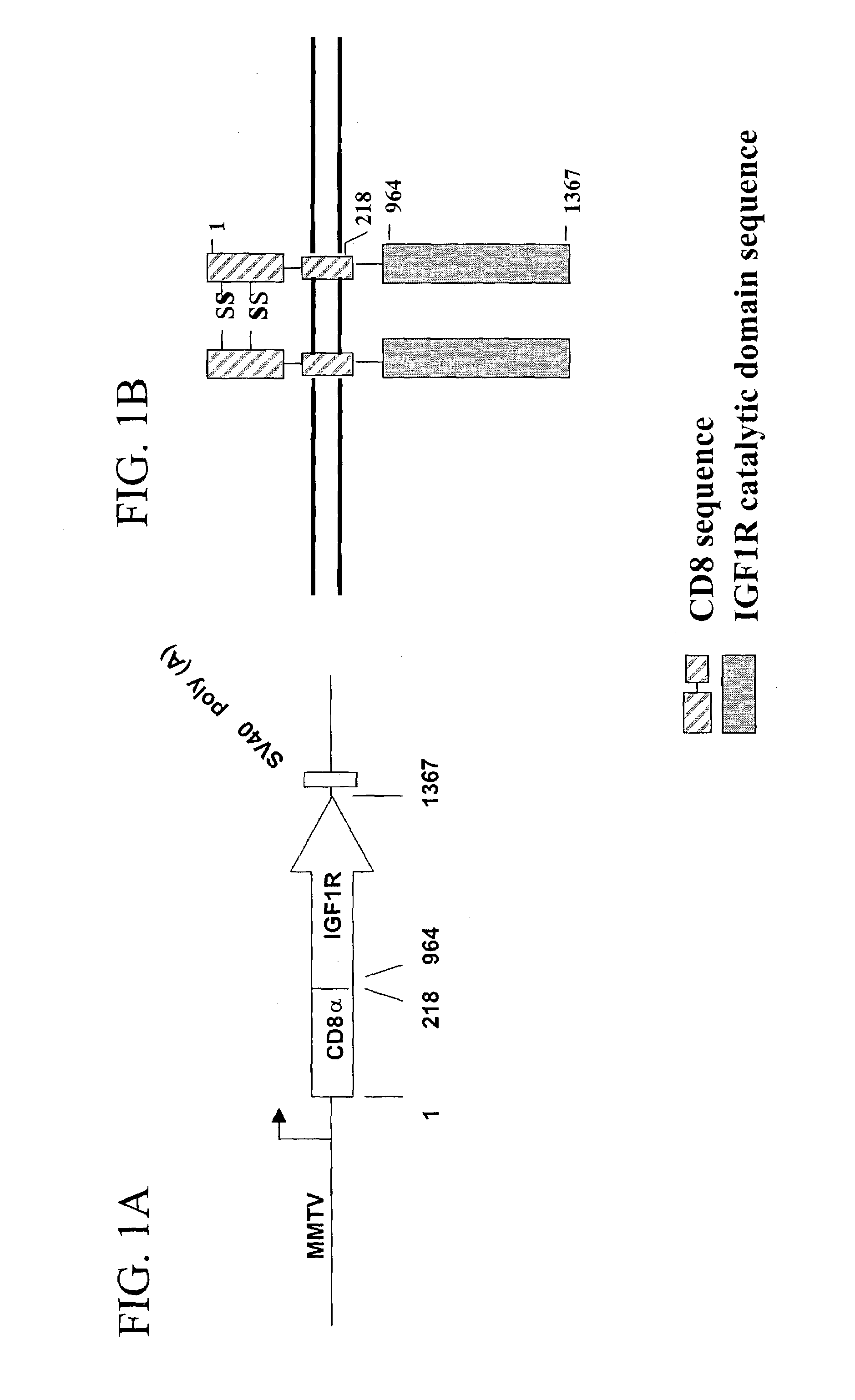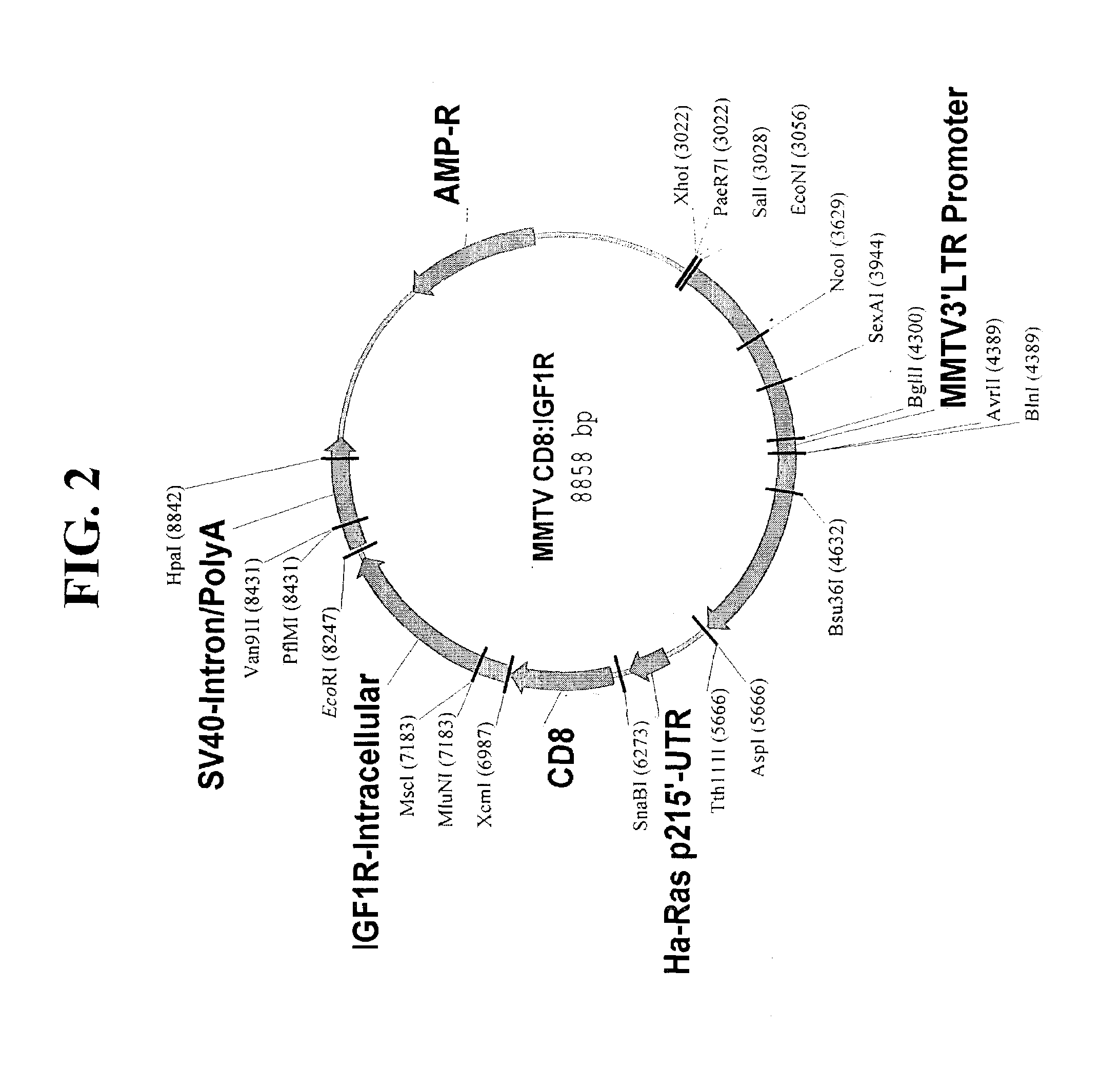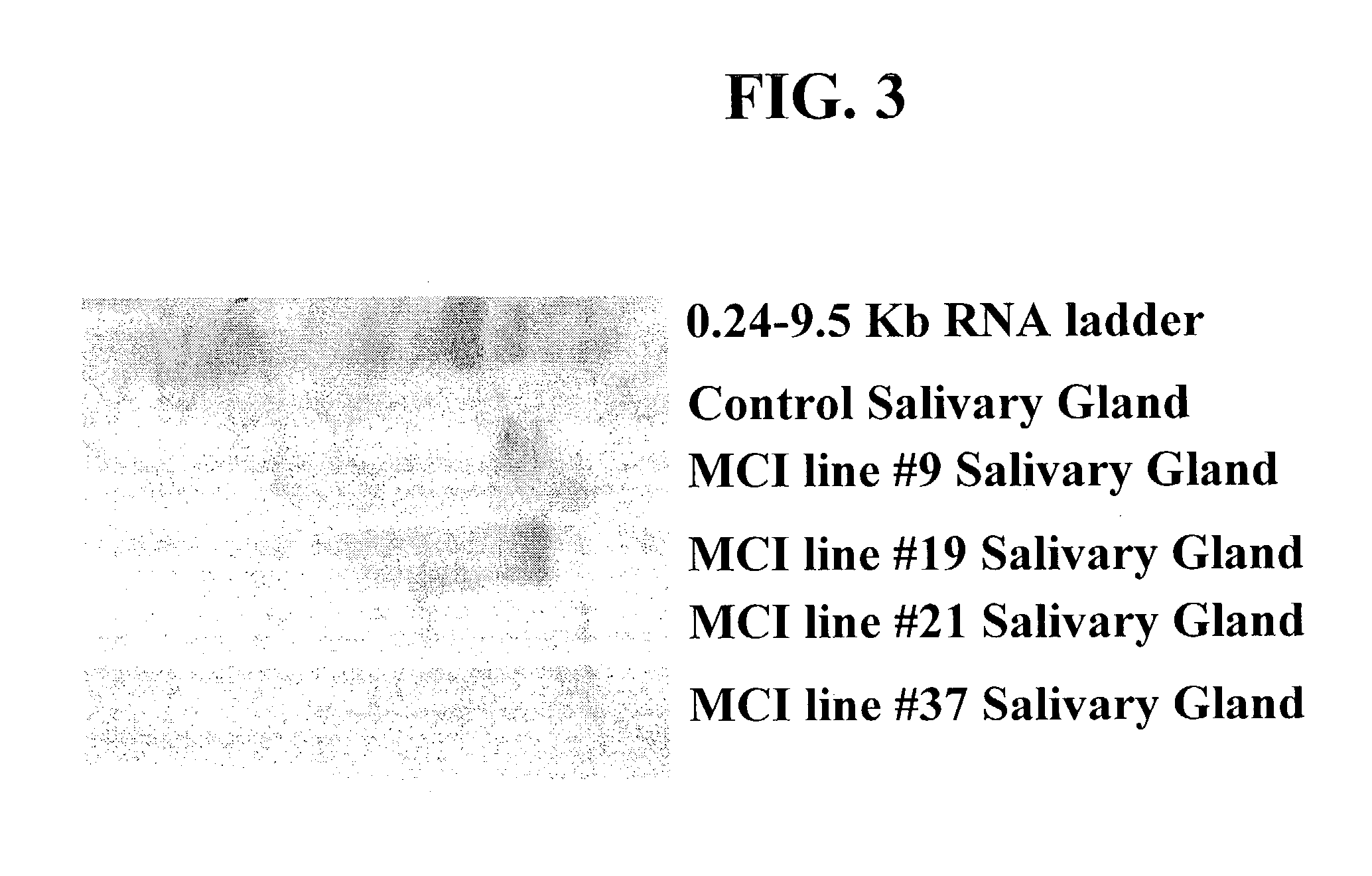Transgenic non-human mammals expressing constitutively activated tyrosine kinase receptors
a constitutively activated tyrosine kinase and non-human technology, applied in the field of tumorsusceptible transgenic non-human mammals, can solve the problems of long latent period for tumor development and complicated models, and achieve the effect of promoting the growth of said mous
- Summary
- Abstract
- Description
- Claims
- Application Information
AI Technical Summary
Benefits of technology
Problems solved by technology
Method used
Image
Examples
example 1
CD8:IGF1R Transgene Construct
[0058]The MMTV-CD8:IGF1R (MCI) construct shown in FIG. 2 and SEQ ID NO:1 was generated using standard molecular biology techniques, for example, Ausubel, F. M. et al., Current Protocols in Molecular Biology, John Wiley and Sons, Volume 2 (1991). A HindIII / BamHI fragment comprising the nucleotide sequence of SEQ ID NO:2 and encoding amino acid residues 1-218 of the human CD8 gene (SEQ ID NO:3) was cloned into the HindIII / BamHI site of pcDNA3.1(+) (Invitrogen™ Corporation, Carlsbad, Calif.). The full length human cDNA for IGF1R was obtained from R. Baserga (Thomas Jefferson University, Philadelphia, Pa.), Morrione et al., J. Virology, 69:5300-5303 (1995). The cytoplasmic catalytic domain was obtained using standard restriction enzyme techniques and subsequently, as a BamHI fragment of the IGF1R comprising the nucleotide sequence of SEQ ID NO:4 and encoding the amino acid sequence of SEQ ID NO:5, was inserted into at this site of the vector containing the C...
example 2
Generation and Breeding of Transgenic Mice
[0059]Transgenic mice harboring the MMTV-CD8:IGF1R construct (MCI) were generated by microinjection of a PVUII fragment from the above construct into the pronucleus of C57B1 / 6XDBA2 F2 (B6D2F2) embryos. Embryos were generated by in-house mating of hybrid stud B6D2 males to virgin females from the same background (Harlan Sprague Dawley, Indianapolis, Ind.) using the techniques described by Hogan et al., Manipulating the Mouse Embryo: a Laboratory Manual, second edition, Brigid Hogan, Rosa Beddington, Frank Constantini, and Elizabeth Lacey, eds, Cold Spring Harbor Laboratory Press (1994). Injected embryos were transferred to pseudopregnant ICR female mice (Harlan Sprague Dawley, Indianapolis, Ind.) and allowed to develop to term. At five to eight days of age, toe and tail samples were taken for DNA analysis of the transgene. Mice harboring the transgene were identified by a polymerase chain reaction (PCR) strategy designed to detect the CD8:IGF...
example 3
[0060]Detection of CD8:IGF1R transgene expression was performed by Northern blot analysis. To identify transgenic lines that had expression of the transgene, F1 offspring from founders were euthanized and their salivary glands were harvested. In addition, expression was analyzed in tumors from two lines of mice, as well as xenograft and cell line samples. For tissues, the samples were flash frozen in liquid nitrogen and stored until the time of mRNA isolation. Total RNA was isolated using a monophasic solution of phenol and guanidine isothiocyanates, such as the Trizol® LS Reagent system as described by the manufacturer (GIBCO™ Invitrogen Corporation, Carlsbad, Calif.). From these RNA isolates, mRNA was extracted using the Oligotex Direct mRNA kit as recommended by the manufacturer (Operon / QIAGEN, Valencia, Calif.). For cell lines, cells were lysed directly into the Trizol® lysis buffer, and stored at −80° C. until needed. The mRNA was resolved in 1.0% agaros...
PUM
| Property | Measurement | Unit |
|---|---|---|
| pH | aaaaa | aaaaa |
| pH | aaaaa | aaaaa |
| time | aaaaa | aaaaa |
Abstract
Description
Claims
Application Information
 Login to View More
Login to View More - R&D
- Intellectual Property
- Life Sciences
- Materials
- Tech Scout
- Unparalleled Data Quality
- Higher Quality Content
- 60% Fewer Hallucinations
Browse by: Latest US Patents, China's latest patents, Technical Efficacy Thesaurus, Application Domain, Technology Topic, Popular Technical Reports.
© 2025 PatSnap. All rights reserved.Legal|Privacy policy|Modern Slavery Act Transparency Statement|Sitemap|About US| Contact US: help@patsnap.com



